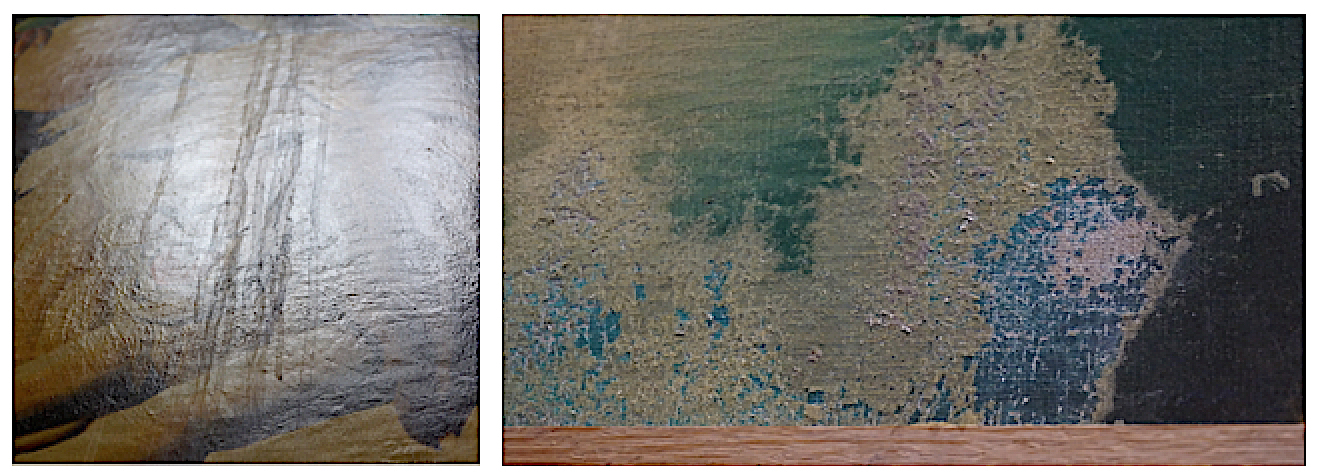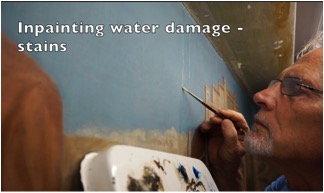Have you noticed flaking on your artwork? Don't panic! There are solutions. Flaking on oil or acrylic paintings can be distressing, but understanding its causes and prevention methods is crucial for preserving your cherished artworks. Flaking occurs when the bond between the layers of paint and the surface they're applied to breaks down. This breakdown can happen due to various reasons, including poor adhesion, moisture damage, temperature fluctuations, and mechanical impacts.
One of the primary reasons for flaking on oil or acrylic paint is poor adhesion between the paint layers and the surface they're painted on. This can occur if the surface wasn't adequately prepared before painting or if the wrong type of primer was used. Without a strong bond, the paint can easily peel away from the surface over time.
Exposure to excessive moisture or humidity is another common cause of flaking. When moisture seeps into the layers of paint, it can weaken the bond between them and the underlying surface, among plethora other problems. This is particularly problematic for paintings done on canvas, as the fabric is more susceptible to moisture damage than other surfaces.
Extreme changes in temperature can also contribute to flaking. When the materials in a painting expand and contract due to fluctuations in temperature, it puts stress on the paint layers. Over time, this stress can cause the paint to crack and eventually flake off.
Physical impacts or abrasions can weaken the paint layers and cause them to flake off as well. This can happen during handling, transportation, or if the painting comes into contact with a rough surface.
To prevent flaking, proactive measures must be taken to protect the integrity of the paint layers and the surface they're applied to. Proper storage is essential, as paintings should be stored in a controlled environment with stable temperature and humidity levels. Avoid hanging them in areas prone to moisture, such as basements, bathrooms, or near windows. Many people choose professional art storage facilities for their paintings not on display.
Handle paintings with care, avoiding excessive pressure or touching the painted surface directly. Use protective coverings during transportation and storage to prevent physical damage. Regular inspection is also crucial, as periodic checks can help detect any signs of flaking or deterioration early on. Early detection allows for prompt action to prevent further damage. If you notice any flaking or other issues, consult with an art conservator for professional advice.
When discussing flaking with a conservator, provide details about the painting's history, current condition, and any noticeable changes. Clear communication ensures the conservator understands the unique needs of your artwork and can provide tailored solutions to address flaking issues.
In summary, flaking is a common issue that can affect paintings done in oil or acrylic. By understanding the causes of flaking and taking preventive measures, you can safeguard your cherished artworks and ensure their longevity. If you encounter flaking on your paintings, consult with an art conservator for professional guidance and conservation treatments tailored to your artwork's specific needs.
Do you need help navigating the insurance claim process for artwork?
Fine Art Conservation Laboratories’ 45 years of expertise in preserving and restoring art offers invaluable help and practical knowledge for helping people through the insurance claim process for damaged collectibles and art pieces. Our experienced team understands the complexities of insurance claims related to art, heirlooms, and antiques, providing reports that are properly prepared with information that the insurance company never puts in doubt. Fine Art Conservation Laboratories charges flat fees for this work, not a percentage of the claim settlement, and our expertise is honored nationwide. Let us help make the art, heirloom, and collectible part of the insurance claim process as seamless as possible and preserve your peace of mind.
This blog post has been syndicated at ExpertClick.com.
What does it mean that this article is “ syndicated”?
It’s a bit of a coup to get an article syndicated, and its certainly prestigious, as additional “proof” that the info and the author are considered far and wide authoritative and an expert in the field. So, enjoy and trust our content!! This article was syndicated for USA national redistribution.
When something is published, usually by a news source, and is made available through different venues for redistribution then it is said to be syndicated. Publications that are syndicated are usually considered of value as being from an expert, educational, new worthy or valuable for wide popular interest. See syndication page at the renowned publicity site: https://www.expertclick.com/NRWire/
This website’s syndication included:
1) Included in the ExpertClick Press Room as a ‘press release.’ (different than a ‘news release’)
2) Included in the ‘Speaker Bureau Platform Page.’
3) Shown on the front page of ExpertClick, in rotation with other most recent posts.
4) Shown in the ‘News Release Results page.’
5) Included on optimized for searches on all my topics of expertise.
6) Shown via RSS linked from the Press Room. (A specific way news is actively distributed within the industry)
7) Shown in the full RSS feed from ExpertClick. (Another, different specific way news is actively distributed within the industry)
8) Syndicated to LexisNexis.com As of 2006, the company had the world’s largest electronic database for legal and public-records related information, distributor of academic content and expert opinion.
This article has been syndicated at https://www.expertclick.com/NRWire/





